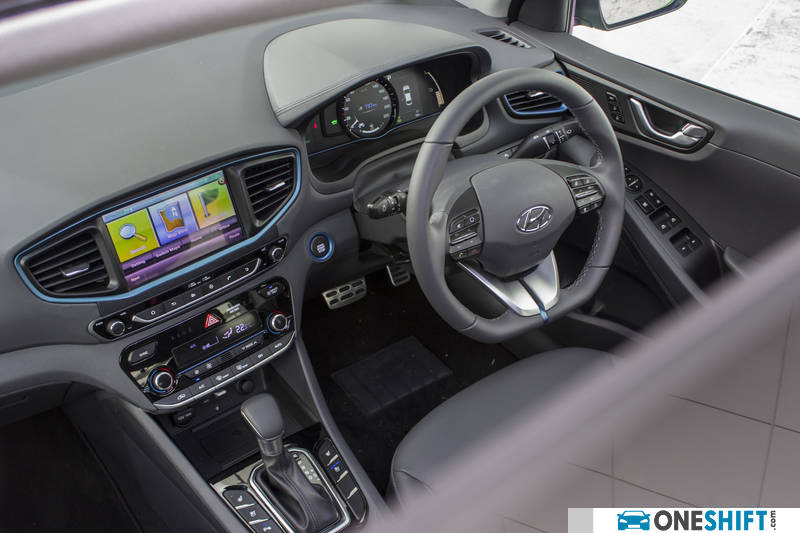Battery This Time Not Included
Hyundai’s compact hybrid car has gone through a very minor facelift, but a very important one. In order to beat the new Vehicle Emissions Scheme (VES), introduced this year, the Korean manufacturer found ways to drop the weight of the car, and more importantly, have the emissions of their popular Ioniq reduced enough to retain an A2 banding.


Hyundai’s compact hybrid car has gone through a very minor facelift, but a very important one.
In order to beat the new Vehicle Emissions Scheme (VES), introduced this year, the Korean manufacturer found ways to drop the weight of the car, and more importantly, have the emissions of their popular Ioniq reduced enough to retain an A2 banding.

Well, just a little.

Just a year ago, the Korean brand launched the original car, and as a testament to its success, there was even quite a healthy fleet buy. There were many here, including us who felt that they made a copy of a Prius, since they did share a similar slippery silhouette. We were, however quickly wronged. Styling aside, the Koreans had their own idea of how a Hybrid should be built.

Hyundai had adopted a higher capacity lithium-ion battery (LIB) over Toyota’s approach of using a nickel-metal hydrate one (NiMH), which means in principle, you could stuff more energy for the same-sized battery.
There is one change however, the facelifted car does away with the conventional 12V battery, and instead taps on power from its 48V unit used to power the car.
The most visible advantage is really a slightly larger boot, since previously the battery did sit on the right-hand side, hogging up precious cargo space.

Additionally, the car is now 12kg lighter, and there are fuel savings, with a 0.38 litre per sec (the pre-facelifted car does an already decent 3.9 litre per sec).
A 1.6 naturally aspirated Atkinson Cycle engine powers the car, and is good for a decent 139bhp and 147Nm of twist. Unlike the Toyota Prius which uses a CVT transmission, Hyundai went with a dual-clutch 6-speed in-house developed automatic transmission, which equates to better response off the line. The transmission however in this application is not the smoothest.

While we would not expect the words “performance” and “handling” to be seen in the same sentence (and since its 0-100km/h timing is at a yawn… 11.1 seconds), we will dare say that the Ioniq did deliver quite well around the bends. Sadly though there is quite a bit of travel before your foot finds some braking power, and the car could use a little more boost for stopping ability.
As with many cars in Hyundai’s stable, the list of kit which comes as standard adds to the draw of the car, like (very important) ventilated front electric seats with memory, a QI compatible charging tray for mobile devices and blind spot detection with lane keep assist, are just some of the features a buyer will get with the car.

With the introduction of the full-electric car into Singapore markets, including Hyundai’s own electric version of this one, the ones who may be in a better position to adopt something this new here, would be those who have the infrastructural means, meaning you will need to live on a landed property with your very own charging station, or at least in a private development which has one of these stations installed.
As for most buyers, a regular hybrid (if you do choose to go a little greener) would be the choice car, and the Ioniq does a decent enough job of getting your around with a lighter footprint.

Credits:







- Convenient and Hassle-Free
- Consumer Protection
Transparent Process
With No Obligation


Get the Best Price for your used car
from 500+ dealers in 24 hours








